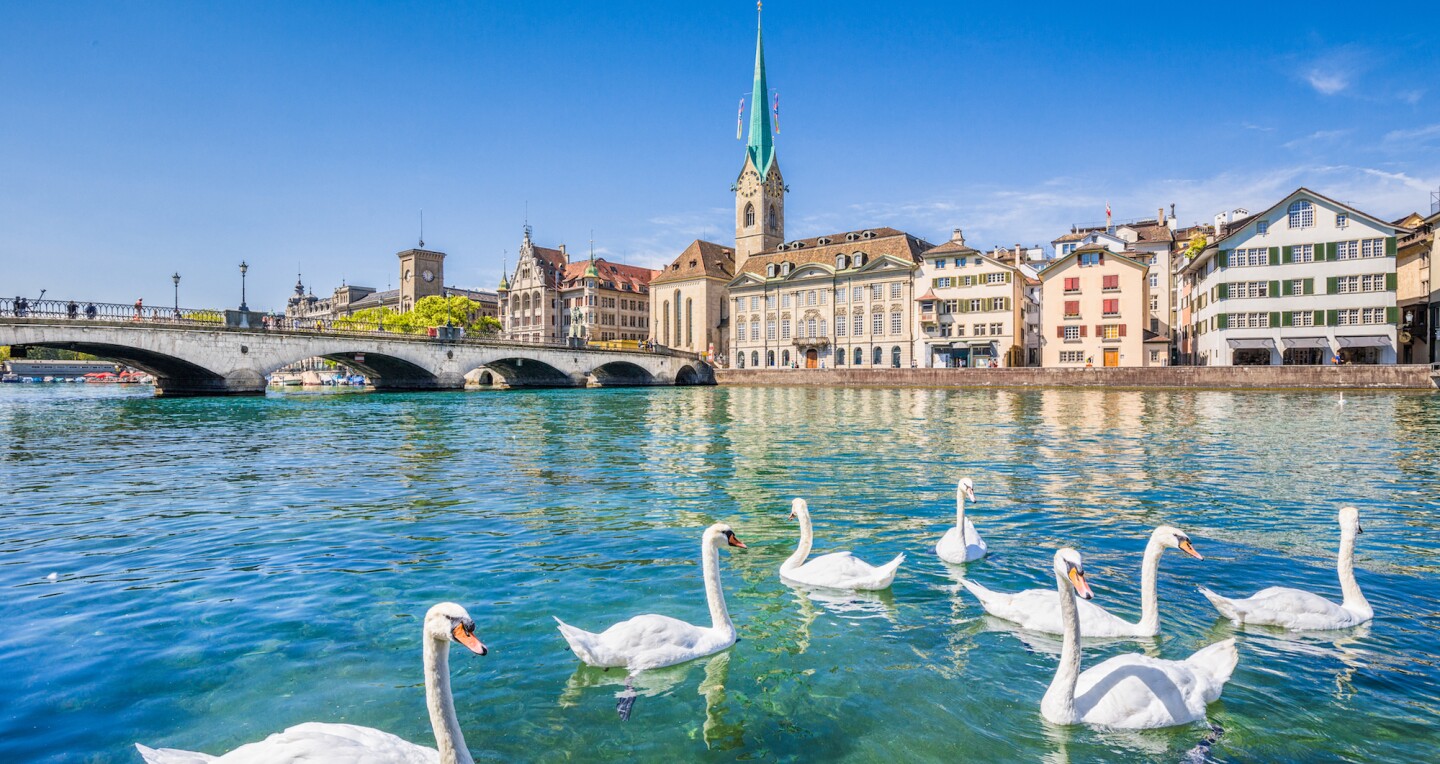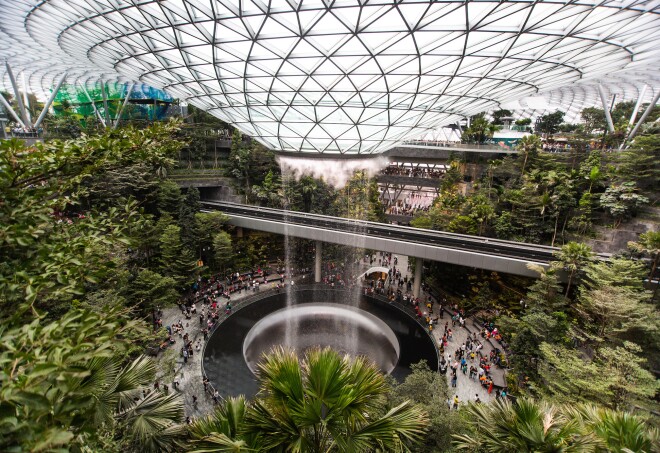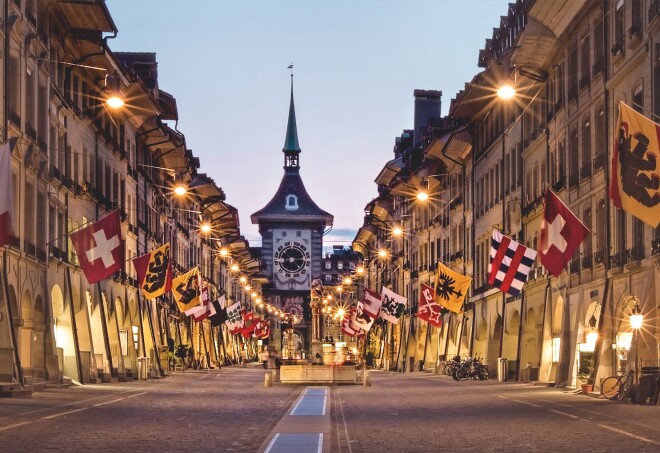Overview
When’s the best time to go to Zurich?
The image of Switzerland might be of snow-capped mountains, but you’ll be hard-pressed to find much snow in Zurich. The country is full of microclimates, and Zurich’s is a moderate one. Winter is a glorious time to visit, thanks to temperatures that barely ever dip below freezing, Europe’s biggest indoor Christmas market, and Bahnhofstrasse shopping—even on Sundays throughout December. Spring weather can be cool and sunny, but it’s often wet, especially in the later months. (One consolation is the numerous pockets of gorgeous cherry blossoms that dot the city.) Surely the best season to visit is summer and early fall, when it’s warm enough to swim in the lake.
How to get around Zurich
The concrete, steel, and glass–clad Flughafen Zürich, also known as Zurich Kloten Airport, offers a microcosm of what to expect in the city you’re about to enter: Everything is pristine, with advertisements for watches everywhere. Zurich’s main train station, Hauptbahnhof, is just eight miles south, and a number of trains will take you there in as little as 12 minutes. The number 10 tram takes 35 minutes but might be more convenient if your destination is on the northern edges of town. Taxis are insanely expensive—about 50 Swiss francs or $55 to the heart of the city—and should be avoided unless you have lots of baggage.
It’s no exaggeration to say Zurich’s public transportation system is the most punctual and reliable in the world. Like practically everything else in this city, it doesn’t come cheap: a one-hour ticket costs 4.20 Swiss francs. But a day pass, at 8.60 Swiss francs, is a relative bargain considering it allows for travel on any of the city’s various modes of public transportation, be it train, bus, tram, funicular, cable car, or boat, during any given 24-hour period. The most popular, and efficient, is the city’s iconic blue tram. A fun alternative is to tour the city on two wheels with Züri rollt, the city’s popular—and free—bike-share program. Also, considering Zurich’s relatively small size and pedestrian-friendly Altstadt, it’s possible to reach many of the city’s most interesting sights entirely on foot.
Can’t miss things to do in Zurich
Even born-and-bred locals can’t get enough of strolling along the lake, with loyalties divided between the right and left bank. The former may seem the obvious stunner, with its gorgeous tree-lined promenade, but the latter certainly has its lures. Keep wandering south until you reach Saffa Island, perhaps the most charming spot on the lake, reachable by an arched pedestrian bridge, and offering a straight-shot view of the Alps.
Food and drink to try in Zurich
Swiss food is hearty—and deliciously indulgent. It is certainly possible to dine on fondue and bratwurst for all your meals here, but it would be wise to seek out some of the lesser-known traditional dishes, like raclette, rösti, and Zürcher Geschnetzeltes, the classic Zurich specialty of pan-fried veal with a creamy white-wine sauce. But the Zurich food scene is much more than just meat, cheese, and potatoes: there’s visionary fine dining, internationally inflected vegetarian, and fresh fish dishes prepared with Lake Zurich catch. There’s also a seemingly limitless choice of chocolate, whether your vice is richly dense cake, Champagne-filled truffles, or single-origin bars. Zurich is a beer-loving city—try a local TurbinenBraü brew—but while you’re here, make sure to sample some of the wines produced from grapes grown in and around the city, many of which you’ll be hard-pressed to find outside of Zurich, much less out of the country.
Culture in Zurich
Where there’s wealth, there’s art. This is a city brimming with cultural institutions. The venerable Kunsthaus, which holds Zurich’s most important collection of modern art, should be on every art lover’s itinerary, as should the lesser-known “Löwenbräu brewery-turned-arts complex, home to Kunsthalle Zürich and Migros Museum für Gegenwartskunst, two of the most important museums for contemporary art in the city. If you never step foot inside a museum, you can still get your fill of great art: Fraumünster church has stained-glass windows by Marc Chagall and Augusto Giacometti, several hotels have sizable art collections (the Widder even commissioned a Rauschenberg), and for high-rolling diners, Kronenhalle serves veal steak and wiener schnitzel amid pieces by Picasso, Matisse, and Mirò.
For a small city, Zurich has a packed celebratory calendar. With time-honored, tradition-bound festivals such as the Sechlauten in the spring, raucous blowouts like Street Parade in the summer, and numerous cultural events like the Zurich Film Festival in the fall, there is no shortage of events around which to plan your vacation.
Local travel tips for Zurich
The Swiss tend to be proud and reserved, but they can be exceedingly polite and helpful if encountered on their terms. Always greet shop owners and restaurant staff with “Greüzi” (hello) when entering, and “entschuldigen” (pardon) before asking a question or making a request. Use polite tram etiquette. On older trams, avoid the second car, which is reserved for strollers and wheelchairs, unless necessary. If you want to cross ahead of an idle tram, make eye contact with the driver and proceed only if he waves you through. The Swiss are very rule abiding: You’ll find them standing at a red light even if there’s no traffic in sight. Follow their lead.






